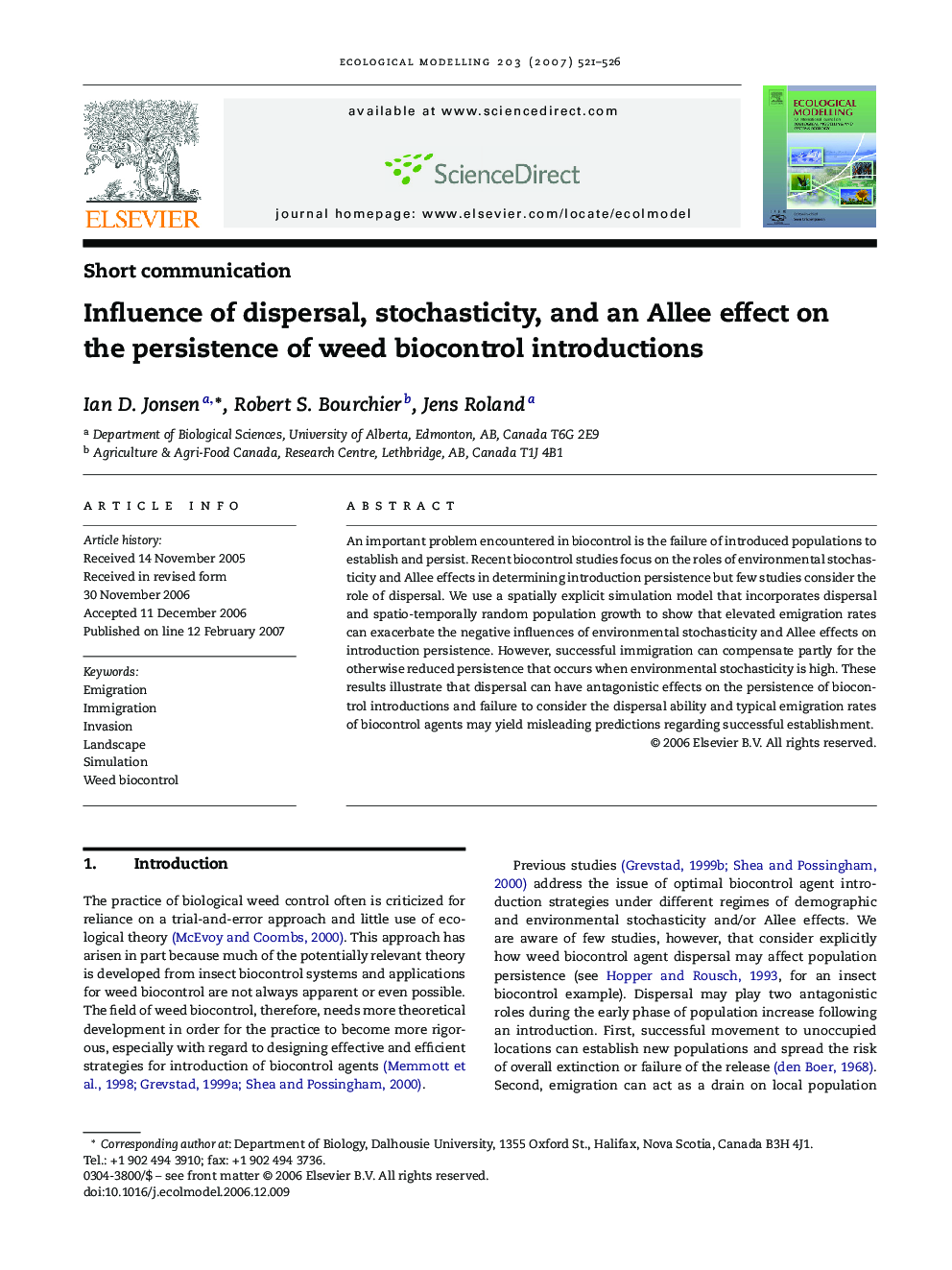| Article ID | Journal | Published Year | Pages | File Type |
|---|---|---|---|---|
| 4378572 | Ecological Modelling | 2007 | 6 Pages |
An important problem encountered in biocontrol is the failure of introduced populations to establish and persist. Recent biocontrol studies focus on the roles of environmental stochasticity and Allee effects in determining introduction persistence but few studies consider the role of dispersal. We use a spatially explicit simulation model that incorporates dispersal and spatio-temporally random population growth to show that elevated emigration rates can exacerbate the negative influences of environmental stochasticity and Allee effects on introduction persistence. However, successful immigration can compensate partly for the otherwise reduced persistence that occurs when environmental stochasticity is high. These results illustrate that dispersal can have antagonistic effects on the persistence of biocontrol introductions and failure to consider the dispersal ability and typical emigration rates of biocontrol agents may yield misleading predictions regarding successful establishment.
